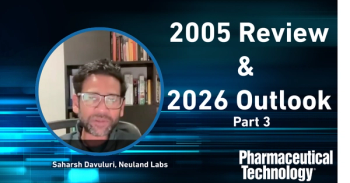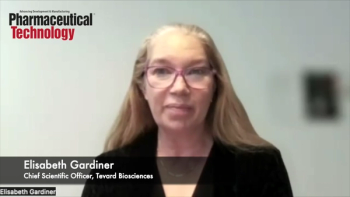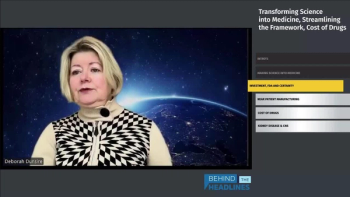
Behind the Headlines, Episode 22: Chronic Disease Priorities, Biomarker Breakthroughs, and CGT-RLT Synergies
Jonathan D. Grinstein, PhD, Manfred Scholz, PhD, and Erik Wiklund, PhD, go behind the headlines to address a shifting policy landscape and what it means for the future of chronic disease, diagnostics, and next-generation cell and gene therapies.
In episode 22, Jonathan D. Grinstein, PhD, North American Editor for Inside Precision Medicine; Manfred Scholz, PhD, President of Scholz Consulting Partners; and Erik Wiklund, PhD, CEO of Circio, tackle a shifting policy landscape and what it means for the future of chronic disease, diagnostics, and next-generation cell and gene therapies. They explore what’s rising, what’s receding, and what’s next for precision medicine.
Refocusing on Chronic Disease
The discussion opens with reflections on a growing realignment in U.S. healthcare priorities—from high-profile acute care innovations toward more long-term strategies for managing chronic illness. The panel agrees that the shift is overdue, citing a large body of data pointing to the long-term burden of untreated and under-managed conditions across the country (1). This shift occurs against a backdrop of geopolitical tensions, including tariffs and widespread staff layoffs affecting the life sciences workforce.
Diagnostics in Transition
The panel then takes a full-circle look at diagnostics—highlighting both high-opportunity fields and high-need gaps. In addition to established companion diagnostics and biomarker work, attention is turning to emerging tools like dried blood spot testing and acoustic ejection mass spectrometry, which promise faster and more accessible protein biomarker quantification (2).
Navigating a Turbulent CGT Landscape
The regulatory environment for cell and gene therapy continues to evolve. The panel notes the FDA’s recent move to halt Sarepta’s Elevidys distribution and place multiple trials on hold after reported deaths (3), while also citing broader
Watch the full episode above for more insights into the evolving biopharma landscape and catch up on previous episodes of
References
- Combating America’s Chronic Disease Epidemic. Rand. March 5, 2025.
https://www.rand.org/pubs/commentary/2025/03/combating-americas-chronic-disease-epidemic.html - Van Puyvelde B, Hunter C, Zhgamadze M. “Acoustic ejection mass spectrometry empowers ultra-fast protein biomarker quantification.” Nature. 2024 Jun 15;15(1):5114. doi: 10.1038/s41467-024-48563-z
- FDA Requests Sarepta Therapeutics Suspend Distribution of Elevidys and Places Clinical Trials on Hold. FDA. News release. July 18, 2025.
https://www.fda.gov/news-events/press-announcements/fda-requests-sarepta-therapeutics-suspend-distribution-elevidys-and-places-clinical-trials-hold - Orbital Therapeutics Presents Non-Human Primate Data for In Vivo CAR-T Therapy. Orbital Therapeutics. News release. July 22, 2025.
https://www.orbitaltx.com/orbital-therapeutics-presents-non-human-primate-data-for-in-vivo-car-t-therapy-with-potential-best-in-class-profile-for-autoimmune-disease/ - Grinstein, J. “From CAR-T to RLT: Enhancing Precision Oncology with ARTBIO’s Radioligands.” Inside Precision Medicine, August 5, 2025.
https://www.insideprecisionmedicine.com/topics/oncology/from-car-t-to-rlt-enhancing-precision-oncology-with-artbios-radioligands/
Newsletter
Get the essential updates shaping the future of pharma manufacturing and compliance—subscribe today to Pharmaceutical Technology and never miss a breakthrough.




